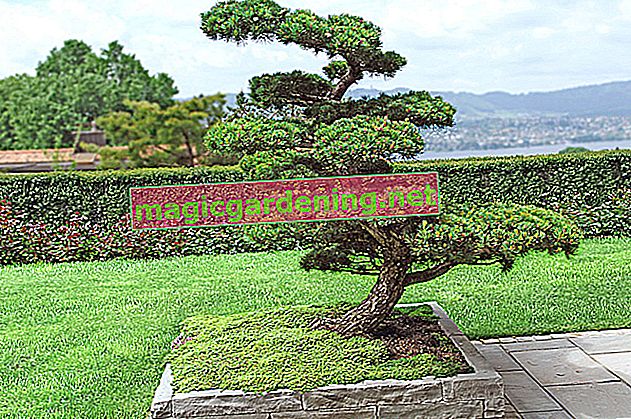
Suitable pine species
Again and again one reads superficially about two pine species that are said to be particularly suitable for a Japanese cut:
- the black pine
- and the girl's jaw
also read
- Small pines
- Pine fruits - small cones with amazing properties
- The ideal time to cut a jaw
The latter only partially fulfills these conditions. The reason for this is the less than optimal site conditions offered by the local climate. It therefore forms a very distinctive cone base, which leaves bald spots when removed and makes the tree vulnerable. The desired appearance could suffer from this, in particular due to the pruning required in bonsai art. In contrast, the “Norske type”, a type of Scots pine, is extremely suitable, as it is very easy to care for due to its flexible wood, even in old age. In principle, however, you can keep any type of pine in the Japanese style.
The timing is crucial
Pine trees stop growing very soon after their peak phase in May. Therefore, the winter (from October) is recommended for a shaping pruning. At this time you can go a little more radical, as you do not threaten to hurt any new instincts.
The
- Scots pine
- Mountain pine
- and black pine
you should cut while they are still forming candles. Once this has resulted in needles, they are particularly sensitive to crushing. At a later point in time, you should therefore no longer cut the annoying branches, but only carefully pluck them off. In general, it is gentler on the conifer if you tie the branches instead of removing them.
Fertilizer supports the development of your jaw
In order to improve the winter hardiness and the nutrient supply of your Japanese cut pine, we recommend the following fertilizers:
- organic matter
- conventional complete fertilizers
- potassium
- Epsom salt
Equipment tips
Various utensils make it easier for you to cut your jaw:
- small hedge trimmers
- a pair of rose shears
- a concave forceps
- a special Japanese stepladder with three legs (kyatatsu)








